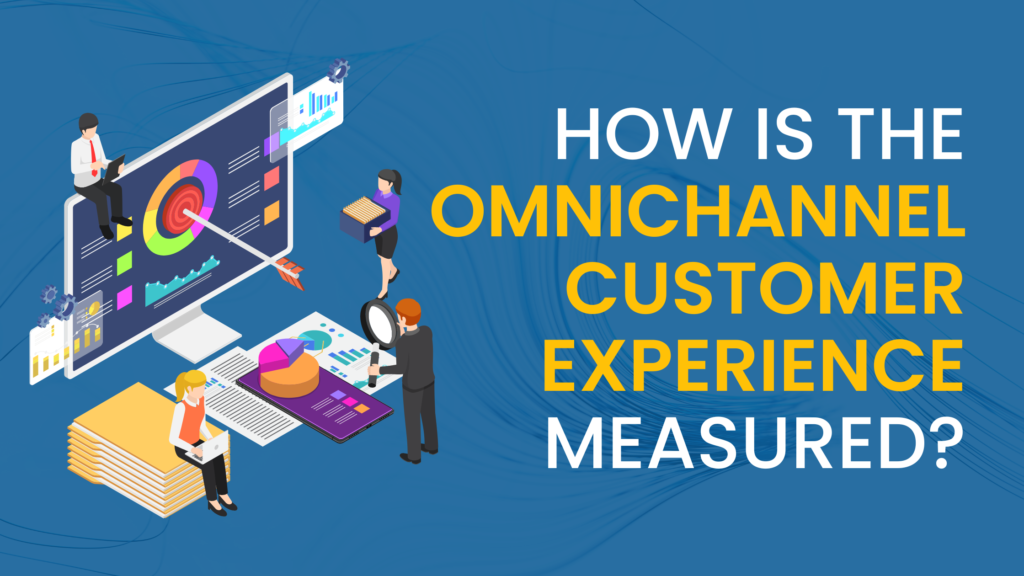According to research from the Harvard Business Review, 73% of consumers use more than one channel (omnichannel) when they shop. Thus, we must provide our customers with an exceptional experience across all touchpoints to ensure they remain satisfied. But to do that, we need to measure the success of our customer experience efforts across all channels the customer interacts with, whether online or offline.
But how do you measure the omnichannel customer experience? We need to focus on certain key performance indicators (KPIs) specific to our customer experience. These customer experience KPIs will help us track and measure the success of our customer experience efforts across all channels effectively and efficiently.
What is the Omnichannel Customer Experience?
An omnichannel customer experience is a holistic approach to marketing, sales, and service. It provides customers with a seamless and integrated experience across multiple channels. In an omnichannel approach, each channel is connected to the other, providing a smoother customer experience. An omnichannel strategy aims to create a more consistent, cohesive customer journey that leads to increased satisfaction and loyalty. For example, let’s say a person wants to buy a new laptop. They start their search by browsing laptops on a company’s website. However, they don’t complete the purchase in this instance. Later that day, they receive an email with a personalized discount code from the company. The customer clicks on the email and purchases the laptop on their mobile device. They then select in-store pickup as the delivery option. When the customer arrives, a store associate greets them by name and escorts them to the pickup counter, where their laptop is waiting. The associate informs the customer of a special promotion for laptop accessories, which the customer decides to purchase as well. In this example, the customer had a seamless experience across multiple channels, from browsing the website to receiving a personalized email to picking up the laptop in-store. The company used various touchpoints to engage with the customer and provide a convenient and personalized experience, ultimately leading to a successful purchase. Don’t miss out on how the omnichannel approach can improve the customer experience – 7 Points to Consider.6 KPIs to Measure Omnichannel Customer Experience
To ensure that our customers are having a positive omnichannel experience, it is important to track and measure key performance indicators (KPIs) related to customer experience. The KPIs are:Customer Satisfaction Score
Customer Satisfaction Score (CSAT) measures the overall satisfaction level of customers. It is usually calculated based on a survey asking customers to rate their satisfaction regarding their purchase on a scale of, say, 1-5 or 1-10. To calculate the customer satisfaction score, we simply need to divide the number of customers who rated their satisfaction positively by the total number of respondents. Finally, multiply the answer by 100 to get a percentage score. CSAT is a critical KPI as it provides insights into how customers perceive a business and its products or services. A high CSAT score indicates that customers are happy and satisfied with the offerings, which means customer loyalty and repeat business. Conversely, a low CSAT score suggests areas that need improvement. Businesses need to take action to address customer concerns and issues. For example, suppose an online retailer surveys 500 customers. They ask them to rate their satisfaction with the website’s user experience. Out of 500 customers, 400 rated the experience positively. In this case, the CSAT score is 80%. This score indicates that most customers are satisfied with the website’s user experience. That being said, there is still room for improvement to address the concerns of the remaining 20%.Customer Lifetime Value
Customer Lifetime Value (CLV) computes the total revenue a business can expect from a single customer over their relationship with the business (customer lifetime). It is calculated by multiplying the average revenue per purchase by the number of purchases per year and the average number of years a customer stays with the business. CLV is essential as it helps businesses understand the value of a customer and allocate their resources accordingly. A high CLV score suggests that the business is doing an excellent job of retaining and creating loyal customers, which is crucial for long-term success. Moreover, it can help identify profitable customer segments and adjust our marketing and sales strategies accordingly. For example, if an e-commerce business has an average revenue per purchase of $50. The customer makes an average of five purchases a year and stays with the business for four years. In this case, the CLV would be $1,000. This means that the business can expect to earn $1,000 in revenue from that customer over four years. If the business can increase the frequency of purchases or the customer’s average order value, the CLV will naturally increase, resulting in more profits.Net Promoter Score
Net Promoter Score (NPS) helps understand actual customer loyalty and advocacy. It is based on the question, “How likely are you to recommend our product/service to a friend or colleague?” Customers are then asked to rate their likelihood on a scale of 0 to 10. Based on their answers, customers are categorized into three primary groups. They are:- Promoters (score 9-10)
- Passives (score 7-8)
- Detractors (score 0-6)

